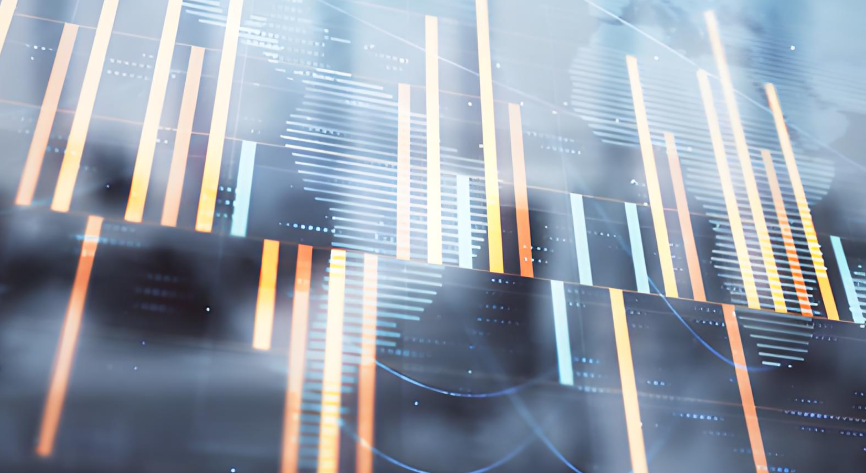In the past two decades, India has captured the world's attention with its rapid economic growth, achieving an average GDP increase of 6.25%, which has propelled it into the ranks of the world's major economiesIn a remarkable turnaround, India has surpassed Canada, France, and the United Kingdom, establishing itself as the fifth-largest economy globallyProminent investment banks, such as Morgan Stanley, predict an even brighter future, forecasting that India will soon surpass Germany and Japan to become the third-largest economy within the next five years.
Behind the scenes, India's economic landscape is marked by a vibrant business culture, with billionaires competing fiercely for the title of Asia's wealthiestThe technology sector is thriving, with countless unicorns emerging across various industriesThis narrative paints a picture of India on the brink of an unprecedented economic leap, offering an optimistic outlook for its potential as a global economic powerhouse.
However, this bright facade belies a grim reality: nearly 10% of India's population lives in extreme poverty
Many individuals reside in dilapidated housing with limited access to essential resourcesBasic sanitation facilities are often inadequate, forcing many to resort to open defecation in several areasFurthermore, Mumbai's largest laundry facility still relies on a rudimentary setup with thousands of workers toiling by hand, reminiscent of a bygone era.
Adding to the complexity, corruption looms like a dark cloud over the nation, seeping into every facet of society and inhibiting healthy economic growthThis stark contrast raises pressing questions: Is India's economy genuinely on the cusp of taking off, or is it merely riding a wave of superficial prosperity that masks deeper issues?
To understand the current landscape, we must explore India's historical contextBefore the 18th century, India and China held nearly two-thirds of the world's economic output, sharing the spotlight as economic leaders
- Structured Deposits Surge Amid High Returns and Risks
- Decoding Japan's Economy
- Honda-Nissan Merger: A Road to Consolidation
- Fortotech Gears Up for Hong Kong IPO
- Buffett's Berkshire Further Cuts Apple Holdings
India's fertile lands and industrious population excelled in agriculture and handicrafts, solidifying its status as an economic superpower.
However, the narrative took a drastic turn with the onset of the Industrial Revolution in Europe, which fundamentally altered the global economic structureWestern nations, armed with advanced technology and industrial capabilities, experienced an explosive increase in productivityIn contrast, India found itself in a precarious position, particularly as the British East India Company began to exert control over its economy.
The Dutch East India Company initially had a limited impact on India, primarily focusing on trade in East and Southeast AsiaHowever, the British East India Company, under the guise of trade, steadily entwined India in a colonial webWhile Britain rapidly advanced through industrialization, India was relegated to a supplier of raw materials and a dumping ground for British products
Spices, textiles, and many resources were exported at an alarming rate, while India's own industrial and technological advancements were stifled.
The disparity between India and Britain grew wider, with India increasingly falling behindBy the time India achieved independence in 1947, the country was a shadow of its former self, with its share of the global GDP plunging from 25% to a mere 2% after over 200 years of colonial exploitation.
Upon gaining independence, India sought to safeguard its interests by adopting a planned economy similar to the Soviet modelThe government imposed strict controls on the industrial and banking sectors, effectively shutting the door to foreign investmentConsequently, a peculiar "license raj" system emerged, which, despite its original aim to regulate markets, became a burden for businesses.
In this system, any enterprise wishing to operate had to navigate a labyrinth of bureaucratic hurdles across multiple government departments

This convoluted approval process drained the energy and resources of businesses seeking to obtain the necessary licensesOnce secured, these licenses created a sense of security for companies, but came at the cost of stifling competition and innovationAs a result, India's economic growth was sluggish and unsteady.
It wasn't until 1991 that India faced a crucial turning point, piggybacking on a series of cataclysmic eventsAmid an economic crisis exacerbated by the collapse of its main trading partner, the Soviet Union, rising oil prices from the Gulf War, and a significant trade deficit, India's government found itself on the verge of defaulting on debtsIn desperation, the government turned to the International Monetary Fund (IMF), securing a loan of $1.8 billion in exchange for implementing harsh economic reforms.
The conditions set forth by the IMF were exorbitant, demanding destining steps towards a market-oriented economy inspired by the Western "Washington Consensus." With limited options, the Indian government embarked on a challenging journey of economic liberalization, slashing tariffs, liberalizing interest rates, and opening up the economy to foreign investments.
Despite the reforms being gradual and incomplete, India slowly broke free from the shackles of its planned economy and embraced the principles of market capitalism
Between 1995 and 2018, India's exports surged at an average annual growth rate of over 13%, making it the third-largest exporter globally behind China and Vietnam, while its overall GDP steadily advanced at an average growth rate of 5.5%.
Now, as India stands at a new crossroads, opportunities and challenges coexistThe global digital transformation has unlocked new avenues for growthWith its vast population, alongside a youthful and innovative workforce, India has gained a foothold in information technology and software services, particularly in Bangalore, often dubbed "India's Silicon Valley." This city serves as a nucleus for cutting-edge technology and talent, catalyzing sustained economic momentum.
On the flip side, India grapples with several profound challenges that demand urgent attentionIncome inequality remains stark, while social mobility is restricted, limiting opportunities for the underprivileged